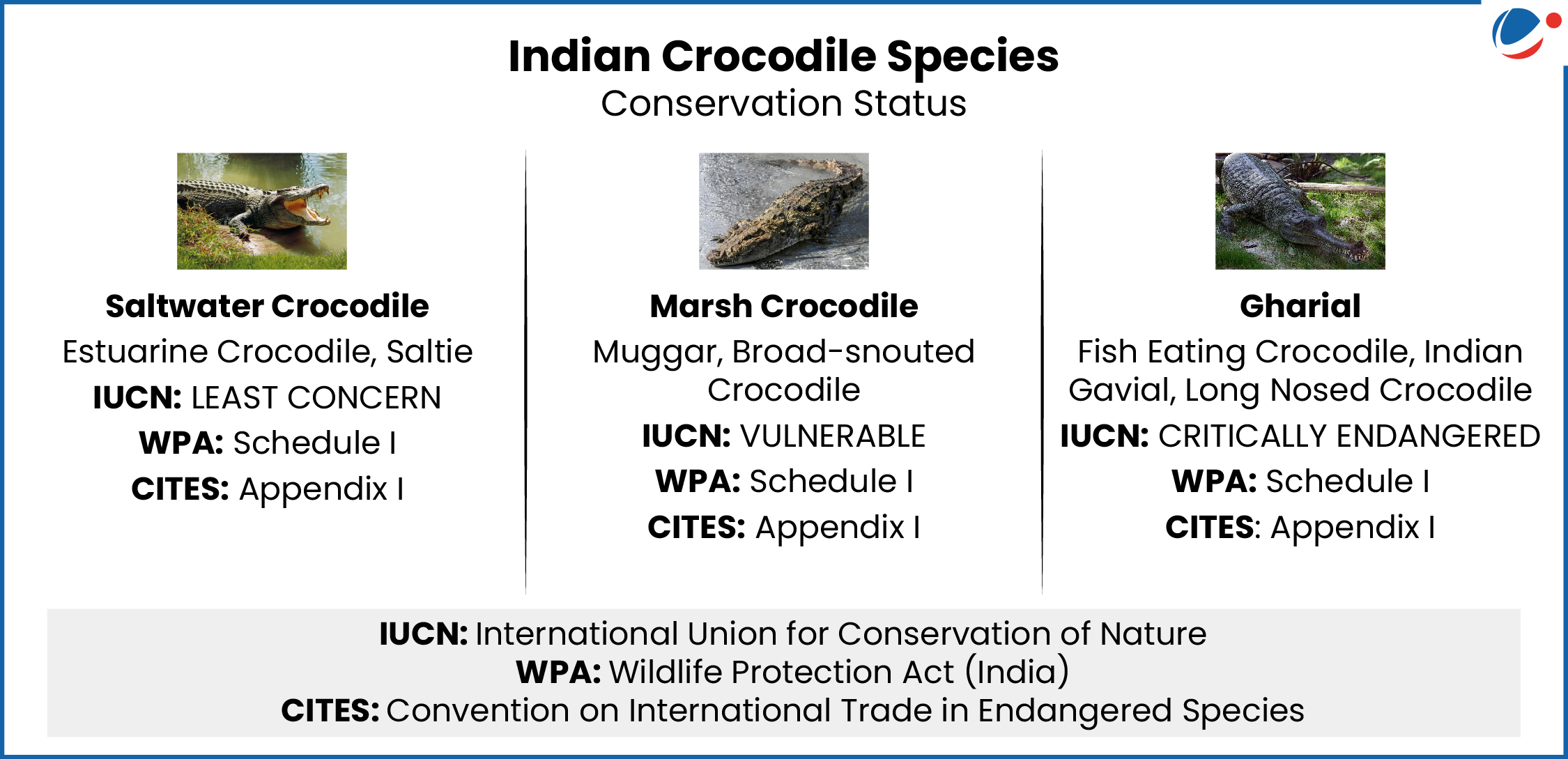On the eve of World Crocodile Day (June 17) India is celebrating 50 years of its Crocodile Conservation Project
About Crocodile Conservation Project:
- Project Launch (1st April, 1975): Based on H.R. Bustard’s recommendations, the Crocodile Conservation Project was formally launched across various States.
- Objective: Protect Crocodile’s natural habitats and rebuild the population quickly through captive breeding.
- Technical and financial support: from UNDP/FAO through the Government of India.
Crocodile Conservation Success in India
- Odisha's Unique Role: The only state in India with conservation centres for all three native crocodilian species:
- Tikarpada (Satkosia) for gharials; Dangamal (Bhitarkanika) for saltwater crocodiles; Ramatirtha (Similipal) for mugger crocodiles.
- Saltwater Crocodile & Mugger Recovery:
- Saltwater crocodile population has recovered to around 2,500 individuals, with Bhitarkanika in Odisha hosting the largest share. Also found in Andaman & Nicobar Islands and Sundarbans (West Bengal)
- Mugger crocodile population has rebounded to 8,000–10,000 individuals, reclaiming most of its historical range (i.e., Ganga River drainage).
- Gharial Conservation: 400+ gharial nests recorded annually across National Chambal Sanctuary (spanning 3 States), Katarnia Ghat Wildlife Sanctuary, Gandak River, Corbett Tiger Reserve, and Son Gharial Sanctuary.
- India now holds 80% of the global wild gharial population.
Ongoing Conservation Efforts:
- In 2025, India announced a new Gharial Conservation Project, aiming to expand gharial populations across the Ganges, Brahmaputra, and Indus rivers, as well as Mahanadi in Odisha.
- Madras Crocodile Bank: Breeding crocodiles and supporting reintroduction programmes.

About Crocodiles
|



